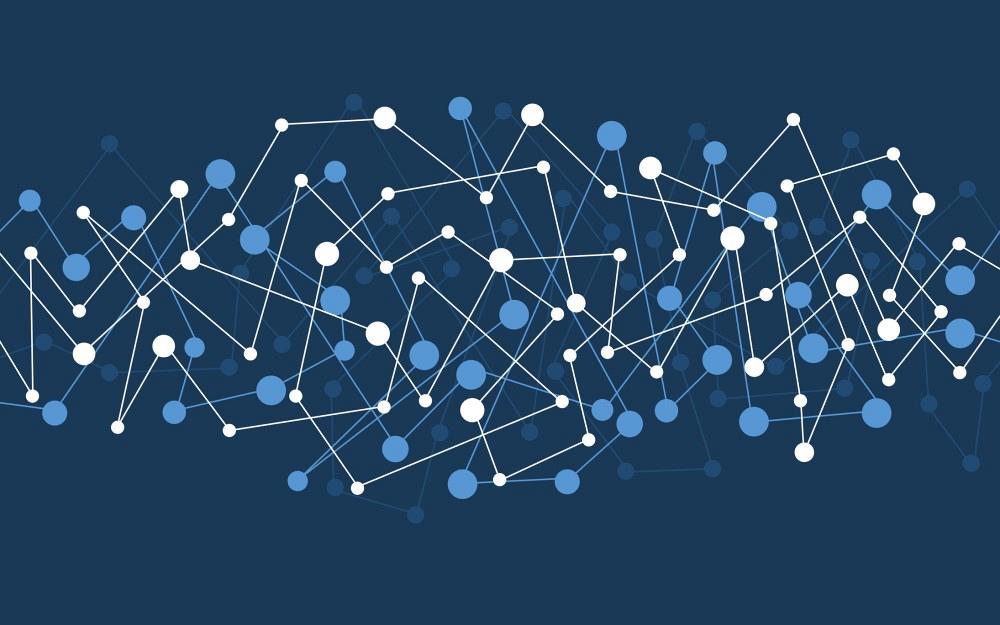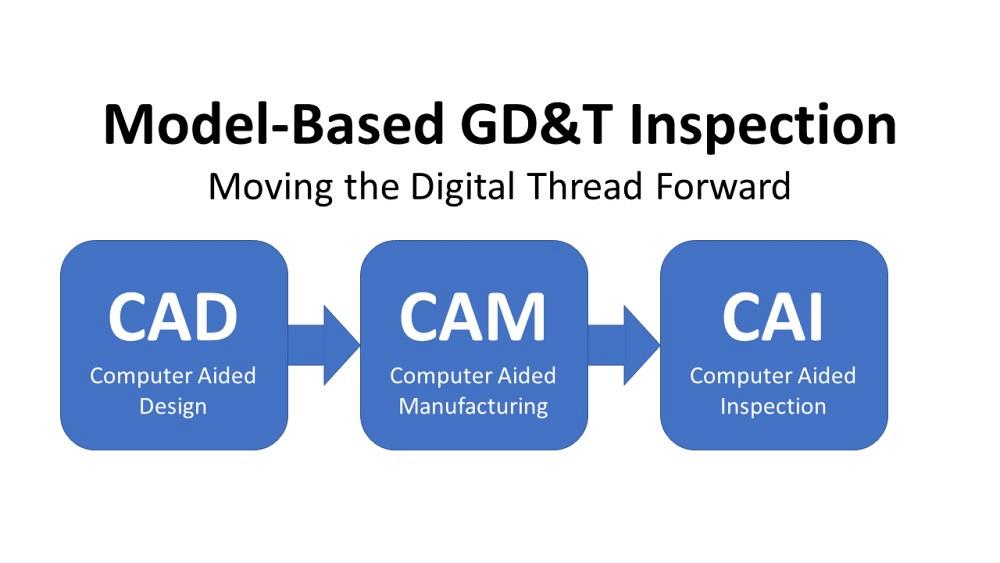director of sales and marketing
- FMA
- The Fabricator
- FABTECH
- Canadian Metalworking
Categories
- Additive Manufacturing
- Aluminum Welding
- Arc Welding
- Assembly and Joining
- Automation and Robotics
- Bending and Forming
- Consumables
- Cutting and Weld Prep
- Electric Vehicles
- En Español
- Finishing
- Hydroforming
- Laser Cutting
- Laser Welding
- Machining
- Manufacturing Software
- Materials Handling
- Metals/Materials
- Oxyfuel Cutting
- Plasma Cutting
- Power Tools
- Punching and Other Holemaking
- Roll Forming
- Safety
- Sawing
- Shearing
- Shop Management
- Testing and Measuring
- Tube and Pipe Fabrication
- Tube and Pipe Production
- Waterjet Cutting
Industry Directory
Webcasts
Podcasts
FAB 40
Advertise
Subscribe
Account Login
Search
Metrology software connects the dots among CAD, ERP, MRP, PLM
Closing the gap on digital continuity with integrated management tools
- By David Olson
- October 22, 2021
- Article
- Testing and Measuring

Keeping data connected to the process depends on having integrated management tools in place, data sharing, and a commitment across the manufacturing enterprise to maintain consistent processes. Getty Images
Regardless of the process used in metal forming operations, one thing is clear: Stampers want more data. They demand digital design authority, revision control, quality verification, statistical monitoring, and responsive resource planning tools. The software used to collect and manage the data has been in use for a long time, but a key success factor lies in maintaining digital continuity.
How CAD, ERP, MRP, PLM Fit
ERP. Enterprise resource planning (ERP) was the first planning platform to establish itself in the manufacturing space, and today 97% of midsized companies are running some form of ERP software.
MRP. ERP evolved from materials resource planning (MRP) back in the 1960s and today is used to plan operations, human resources, purchasing, inventory management, order management, and accounting.
PLM. Product life cycle management (PLM) software collects and manages all the information and processes at every step of a product’s or service’s life cycle across globalized supply chains. This includes the data from parts, products, documents, requirements, engineering change orders, and quality work flows. PLM software has been able to proliferate in recent years because of advances in data gathering, storage, and processing capabilities.
Combine ERP with PLM and the result is a data resource to be reckoned with, as long as one condition is met–-continuity of data. Remember the adage junk in, junk out?
CAD. Once you recognize that the CAD model is the headwaters of the design/build process, it is clear to see that digital continuity must begin there. Where it goes from there, and keeping the data connected to the process, depends on having integrated management tools in place, data sharing, and a commitment across the manufacturing enterprise to maintain consistent processes.
The goal should be for the intelligent CAD model to serve as the design and manufacturing authority. What this means for manufacturing and inspection is that all dimensions and tolerances are pulled from the 3D model instead of 2D paper drawings. Making the model the authority removes ambiguity, conflict, and doubt that arise when drawings and models coexist.
Metrology Supports Model-based Definition
One of the first challenges you encounter when working down the design/build process is metrology. Post-CAD measurement data often is necessary to support manufacturing engineering, collect missing feature data, create geometry for complex surfaces profiles, toolmaking, assembly guidance, and quality verification.

Verisurf software is an example of MBD for inspection. Built on a CAD platform, the software reads in intelligent 3D models, including GD&T datums, and can edit or add annotations. Using input from any CMM, the software compares and verifies the nominal 3D CAD model to the finished part in real time. First-article inspection reports then can be generated in a variety of presentation formats.
Traditionally, each of these processes was completed downstream, and often beyond the CAD model. Even though this metrology integration gap is closing, many stamping manufacturers still are out there in the digital divide trying to connect the dots. CAD/CAM has been a collective term and reality for years.
A critical missing link that maintains digital continuity early in the design/build process is model-based definition (MBD), and more specifically, computer-aided inspection (CAI), which uses MBD data to verify quality.
Once you have connected MBD and CAI to your digital work flow, you are now at the doorstep of true digital continuity. Remember, that path starts with the intelligent 3D CAD model on through toolmaking, assembly guidance, reverse engineering, automated inspection and reporting, PLM, and statistical process control (SPC).
The concept of digital continuity runs deep, and it can be overwhelming for some OEMs and stampers to get their arms around. An excellent first step is that commitment to the intelligent CAD model as the design authority. Think of the CAD model as the golden part. Using a CAD-based metrology platform to guide and inspect the processes not only bridges digital continuity gaps early in the design/build process, it will move you closer to compliance with emerging OEM requirements and bridge the gap to true CAD/CAM/CAI integration.
The further upstream toward the design process that you can embrace the MBD concept, the better. There is a common term used by manufacturing engineers who are responsible for ensuring manufacturability of a part or product. It’s called decorating the model, in reference to geometric dimensioning and tolerancing (GD&T) annotations placed by the design engineer. Quite often the model is overdecorated with nonessential geometric tolerancing while missing data critical to manufacturing, quality inspecting, and reporting.
Software that bases its measurement and inspection software on an open CAD platform enhances compatibility and the need for users to contribute to the nominal CAD model as it moves through the process.
This keeps digital continuity intact so at the end of the day, a complete digital archive containing everything to run the job again in the future--including design, manufacturing engineering, inspection plans, and of course all GD&T nominals--exists in one comprehensive file.
Standard files formats like STEP AP 242 and IGES are important bridges that allow manufacturers to move data from one platform to another. However, true integration and compatibility are best handled at the application level.
The measurement software should support and drive virtually any CMM, arm, tracker, scanner, or other digital measuring device.
The common theme to remember when referring to a manufacturing system is open platform compatibility. This is a key requisite to passing the digital baton throughout the process and maintaining continuity.
Metrology has always been a critical part of precision manufacturing. Current trends are all about repeatability, speed to market, quality, and verification. New technologies make most things better, faster, and cheaper. But as with almost every new concept, from the TV remote to the cellphone, adoption and integration take time.
About the Author
David Olson
Verisurf Software Inc.
4907 E. Landon Drive
Anaheim, CA 92807
714-970-1683
Related Companies
subscribe now

The Fabricator is North America's leading magazine for the metal forming and fabricating industry. The magazine delivers the news, technical articles, and case histories that enable fabricators to do their jobs more efficiently. The Fabricator has served the industry since 1970.
start your free subscription- Stay connected from anywhere

Easily access valuable industry resources now with full access to the digital edition of The Fabricator.

Easily access valuable industry resources now with full access to the digital edition of The Welder.

Easily access valuable industry resources now with full access to the digital edition of The Tube and Pipe Journal.
- Podcasting
- Podcast:
- The Fabricator Podcast
- Published:
- 04/16/2024
- Running Time:
- 63:29
In this episode of The Fabricator Podcast, Caleb Chamberlain, co-founder and CEO of OSH Cut, discusses his company’s...
- Trending Articles
AI, machine learning, and the future of metal fabrication

Employee ownership: The best way to ensure engagement

Steel industry reacts to Nucor’s new weekly published HRC price

Dynamic Metal blossoms with each passing year

Metal fabrication management: A guide for new supervisors

- Industry Events
16th Annual Safety Conference
- April 30 - May 1, 2024
- Elgin,
Pipe and Tube Conference
- May 21 - 22, 2024
- Omaha, NE
World-Class Roll Forming Workshop
- June 5 - 6, 2024
- Louisville, KY
Advanced Laser Application Workshop
- June 25 - 27, 2024
- Novi, MI



























